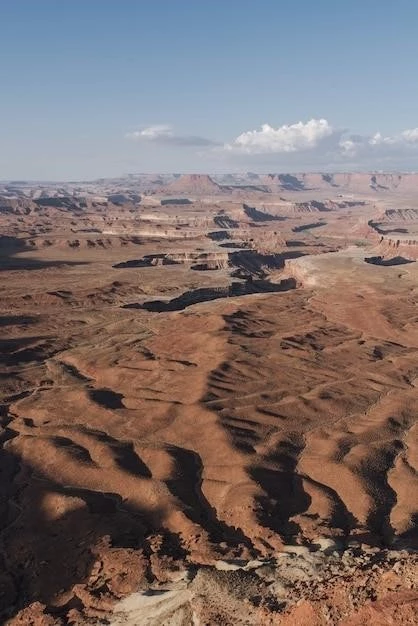Deserts, vast and desolate landscapes that cover nearly one-third of the Earth’s land surface, are often perceived as barren wastelands․ However, beneath their stark exteriors lies a captivating beauty, a testament to nature’s resilience and artistry․ From towering sand dunes sculpted by the wind to rugged canyons carved by centuries of erosion, deserts offer a unique and awe-inspiring spectacle․ This article delves into some of the most remarkable deserts around the globe, each with its own distinct charm and allure․
1․ The Sahara Desert: The King of Deserts
Spanning across North Africa, the Sahara is the world’s largest hot desert, covering an area almost as large as the United States․ Its iconic sand dunes, some reaching heights of over 180 meters (590 feet), are just one facet of its diverse landscape․ The Sahara also encompasses gravel plains, rocky plateaus, and even mountain ranges․ Despite its harsh conditions, the Sahara is home to a surprising array of life, including nomadic tribes who have adapted to its unforgiving environment․
2․ The Atacama Desert: A Martian Landscape on Earth
Located in South America, the Atacama Desert is renowned as the driest non-polar desert on Earth․ Some areas have not received rainfall for centuries․ This aridity, coupled with its high altitude and clear skies, creates an otherworldly atmosphere reminiscent of Mars․ The Atacama’s surreal landscape is dotted with salt flats, volcanoes, geysers, and lagoons teeming with flamingos․ Its extreme dryness also makes it an ideal location for astronomical observatories․
3․ The Namib Desert: Where Dunes Meet the Ocean
Stretching along the southwestern coast of Africa, the Namib Desert is considered the oldest desert in the world, with a history spanning over 55 million years․ Its towering sand dunes, some exceeding 300 meters (980 feet) in height, plunge directly into the Atlantic Ocean, creating a mesmerizing contrast between land and sea․ The Namib is also home to unique flora and fauna, including the iconic welwitschia plant, which can live for over a thousand years․

4․ The Gobi Desert: A Cold and Rugged Wilderness
Located in Central Asia, the Gobi Desert is a cold desert, experiencing frigid temperatures and occasional snowfall during winter․ Its landscape is characterized by vast gravel plains, rocky outcrops, and mountain ranges; The Gobi played a significant role in the Silk Road trade route and is renowned for its dinosaur fossils, offering a glimpse into a prehistoric past․
5․ The Mojave Desert: A Tapestry of Cacti and Joshua Trees
Occupying a significant portion of southeastern California and parts of Nevada, Arizona, and Utah, the Mojave Desert is home to a diverse ecosystem․ It is renowned for its iconic Joshua trees, which thrive in its arid climate․ The Mojave is also home to Death Valley, the hottest, driest, and lowest national park in the United States․ Despite its extreme conditions, the Mojave Desert boasts a surprising array of plant and animal life․

6․ The Arabian Desert: A Vast Sea of Sand
Encompassing most of the Arabian Peninsula, the Arabian Desert is the second largest hot desert in the world․ Its landscape is dominated by sand dunes, some reaching heights of over 250 meters (820 feet)․ The Arabian Desert played a pivotal role in the development of Arab culture and is home to significant oil reserves٫ shaping the geopolitical landscape of the region․
7․ The Thar Desert: The Great Indian Desert
Located in northwestern India and eastern Pakistan, the Thar Desert is characterized by shifting sand dunes, scrub forests, and salt lakes․ It is one of the most densely populated deserts in the world, home to a rich cultural heritage and a resilient human population that has adapted to its challenging environment․
8․ The Kalahari Desert: A Semi-Arid Wilderness
Spanning across Botswana, Namibia, and South Africa, the Kalahari Desert is a semi-arid savannah characterized by vast grasslands, scattered trees, and seasonal rivers․ It is home to a remarkable diversity of wildlife, including lions, elephants, giraffes, and meerkats․ The Kalahari is also home to the San people, one of the oldest cultures on Earth, known for their hunter-gatherer lifestyle․
Conclusion
Deserts, far from being barren wastelands, are vibrant ecosystems teeming with life and beauty․ Their stark landscapes, sculpted by wind and time, offer a unique perspective on the power of nature․ From the towering sand dunes of the Sahara to the surreal landscapes of the Atacama, deserts continue to captivate and inspire, reminding us of the extraordinary diversity and resilience of our planet․










